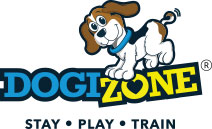Transitioning a Rescue dog
When you first bring your newly adopted dog home, there are steps you will want to take to ensure that this is a time of easy transition to keep your new addition from becoming too overwhelmed. Your new dog will be confused about where exactly she is and what to expect from you. You will want to have everything already set up for her and be sure that her area is “dog-proofed” to ensure that she does not get into anything on her first few days there. As mentioned in the previous sections, having a strong foundation in your relationship together and demonstrating that you are her clear and consistent leader will aid greatly in helping her relax and make herself at home.
The first day or even week at a new home is likely to be stressful, so to ease the stress on your new addition, it’s best to not overwhelm her with many new people and experiences all at once. It is often said that people don’t really get to know their dogs until after a few weeks that they have been in their home that their dog’s true personality has finally surfaces. Keeping a steady pattern and schedule allows for her to become more confident and shed her shyness away quicker. Gradually change her food over if you are going to do so, slowly introduce new people into her life, and only allow her to explore new places piece by piece, one at a time. Introducing new things at a slower pace allows you to get to know her likes and dislikes to a much greater extent as well.
Socialization for any dog is one of the most important aspects of a canine’s life. Although the critical developmental period is over by the time a puppy is 16 weeks old, there are always opportunities to expose your dog to the real world. However, most of the time that you rescue a dog, you aren’t able to have all of the information regarding every positive and negative experience your dog has had throughout her pre-existing life. This means that you must take into consideration that there are likely to be times that your dog will react in a manner that you may not be able to foresee.
If you want to get a good idea for what your dog is comfortable with, it is best to try him out around those items and situations that tend to get bad reactions from your average dog. These include things such as the mailman, garbage truck, men with beards, ladies with big hats, a disabled person in a wheelchair, an injured person in crutches, people wearing masks and costumes for events and holidays, and so on. You will also want to see how your dog reacts to the law mower, vacuum, blow dryer, mop/broom, bicycles, and similar things before you actually need to turn them on or use them in everyday life.
You also want to be sure your dog is comfortable with getting looked over by a veterinarian when he or she goes in for check ups, and potentially by groomers and other people throughout his lifetime. Getting her to be comfortable with her paws and tail being touched, ears, eyes and teeth getting checked out, and her body being examined is critical, as many dogs that have not been exposed to proper handling in the beginning tend to struggle being comfortable with such handling throughout their life. Making sure she will tolerate wearing a muzzle, getting her toes trimmed, ears cleaned, and coat brushed out will help her become more accepting of pet care professionals like veterinarians and groomers that may need to handle her as well.
